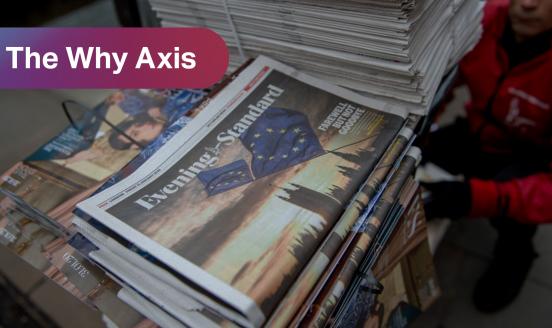T-(rompe-l’Oeil)-LTRO
I already pointed out that several important points were quite vague in the initial ECB T-LTRO announcement. Some of these have been clarified, b
Yesterday the ECB’s Governing Council unveiled further technical details on its new programme of Targeted Long-Term Refinancing Operations (TLTRO). This was announced on the 5th of June and at present it constitutes the main hope for the ECB to be able to fight the risk of deflation in the euro area, given that no asset purchase programme has yet been announced. I already pointed out that several important points were quite vague in the initial ECB announcement. Some of these have been clarified, but the most important issue is still unaddressed - how (if at all) will banks be prevented from using the funds to buy government bonds?
The first clarification concerns the criteria behind the allocation of funds. As a reminder from my previous piece, the TLTRO will work in two phases. Under the first phase, banks will be able to borrow up to an initial allowance, in two operations in September and December 2014. The Initial allowance is defined as 7% of the outstanding amounts of loans to euro area non-financial corporations and households, excluding loans to households for house purchase, as of 30 April 2014.
This was known since the beginning, but it is interesting to learn that banks will be given the possibility to participate to the TLTRO as standalone borrowers or in “TLTRO groups”, provided they can qualify as sufficiently “closely linked”. This can potentially leverage the effectiveness of the TLTRO. The borrowing limits applicable to the leading institution of a TLTRO group will be calculated on the basis of the outstanding amounts of eligible loans and eligible net lending granted by all members of the TLTRO group in aggregate. The funds will then be presumably spread out across the members of the group, so that some members could benefit from a larger amount of funds than they could get if they were participating as standalone borrowers.
More interesting are the criteria that will apply for the second phase of the TLTRO, the one that should allows “leveraging” the measure beyond the initial allowances and at the same time imposing the incentive for banks to actually use the funds for lending to the economy. Between March 2015 and June 2016, banks will in fact be able to borrow additional amounts that can cumulatively reach up to three times each bank’s net lending provided between 30 April 2014 and the respective allotment reference date, in excess of a specified benchmark. It goes without saying that the definition of the benchmark is crucial for the success of the programme.
The ECB has specified yesterday how the benchmark will be computed, and as anticipated, it looks rather generous. In particular, the benchmark will differ depending on the net lending position of banks. For banks that had positive or zero eligible net lending in the 12-month period up to 30 April 2014, the benchmark will be set at zero eligible net lending (see Chart 1). This basically means that in order to qualify for the 6 TLTROs conducted from 2015 on, banks will just need not to shrink their balance sheet and perhaps do a little bit better than they did over last year, depending on how much they wish to leverage in the second phase (the bigger their net lending from now on, and the larger the amount they will be able to borrow under the second wave of TLTROs).
For banks that instead had negative eligible net lending over last year, the benchmark will be a function of the average monthly eligible net lending achieved in the twelve months to 30 April 2014 (so a negative bechmark) until June 2015, then it will be set to zero as for the other banks.
Source: ECB
In practice, this is nothing but a complicated way to say that it should be rather easy for banks to qualify for the funds. “Virtuous” banks, who were already increasing their lending to the economy over last year will be required basically not to shrink their balance sheet or do a little better than they were doing. Banks that were instead contracting their balance sheet will be allowed some more time before having to turn to positive net lending. Over that period they will be just required to deleverage at a slower pace than they were doing until now, but they will be able to borrow.
Up to here, positive news that should favour a big take up of the TLTRO - Draghi proved optimist in the press conference, anticipating that banks could decide to borrow in the order of 1trn. However, one point remains apparently unaddressed and it is a crucial one. The ECB in fact has not added clarity about how (if at all) banks will be prevented from using the funds to buy government bonds. Banks could use part of the funds borrowed in Phase 1 to buy government bonds and still qualify for Phase 2, but even in case they were not to qualify the only consequence at the moment appears to be that they would be forced to repay the funds earlier but could still enjoy the profits of a carry trade in the meantime. More generally, there seems to be no specific constraints once the funds are borrowed and, as noted by several analysts, there seems to be no penalties in view for the banks that do not meet the benchmarks. This is definitely not a second order issue, as it could be appreciated over the last 2 and ½ years, and it constitutes an important flaw of the previous LTRO operations.
Until there is a clear solution to the issue of monitoring the use of funds, the additional “T” is just a Trompe-l'œil.



